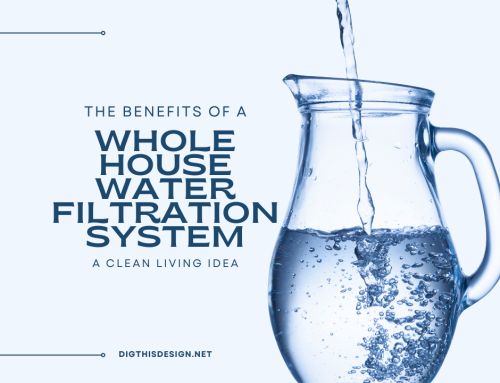A water softener might seem like a luxury add-on for a house, but in reality, it can go a long way toward saving property, clothing, plumbing, and your skin.
The fact is, that homeowners in neighborhoods with hard water are getting bombarded with multiple minerals in their tap water every time the faucet or plumbing is turned on. And that creates a lot of damage over time.
Clothes start to fall apart, scaling happens in the bathroom, your skin feels extra dry and damaged after every shower and even the plumbing can prematurely age from hard water. A softener mechanically dampens this effect, making your water taste better as well as reducing the negative effects that otherwise automatically occur with every wash.
7 Reasons to Purchase a Water Softener

What is Hard Water?
Unlike regular tap water, hard water has a heavier concentration of calcium and magnesium in it. That ends up creating deposits on everything it washes onto. Those same materials end up in clothing as well as dishes and your body. They also leave streaks on surfaces over time, which results in staining. In essence, hard water is liquid with a lot of extra in it that doesn’t help with regular living. That said, hard water isn’t poisonous per se; you can drink it normally, but over time the same minerals can cause some mild digestive issues as well.
How a Water Softener Helps
A water softener produces its benefits by filtration. The system uses salts and a process of flushing the tap water through the same to strip out and remove minerals. The result is a cleaner liquid that doesn’t have all the damaging effects otherwise causing all the problems for homeowners.
The impacts of water softeners benefits are multiple. Clothes stop being worn out so quickly and have greater durability. Laundry detergent lasts longer and cleans better. There are fewer stains and scaling in the bathroom and sinks. And, hopefully, the house plumbing deals with fewer deposits, allowing water to flow better through the system. Where metal is exposed, hard water can also be very corrosive, so removing its minerals helps slow the same damage as well. That affects things like big appliances that use water (laundry machines, water heaters, etc.).
Considering Installation
The installation of a water softener is placed so that it intercepts the main flow of water into the home. That way every faucet and feed line is affected by the filtration versus just a few. This reduces the damage in total and avoids a homeowner having to remember which faucet or connection to work with to have clear water.
Periodically, the water softener has to be serviced for maintenance, changing out the old filtration elements with replacements. This removes all the residue captured and places the water softener back into full working condition again. To some extent, like everything mechanical, maintenance may need repairs as well. Fortunately, there is plenty of support for a water softener as the technology has been around for quite a while.
Dietary Sensitivity Can be Affected
Again, water softeners use salt as part of their cleaning process. That means there will be a salt intake increase in the water that people cook with and drink. Those with specific diet limitations for reduced salt intake may want to use bottled water for cooking and drinking versus tap water once a softener is connected, otherwise, daily ingestion of salt may increase noticeably.
Overall, water softeners continue to be an effective offset to the constant damage caused by hard water. Utilities and municipalities aren’t going to change their water production processes anytime soon, so a homeowner’s best bet for significant improvement is to install a softener outright and avoid the problem from the start.





